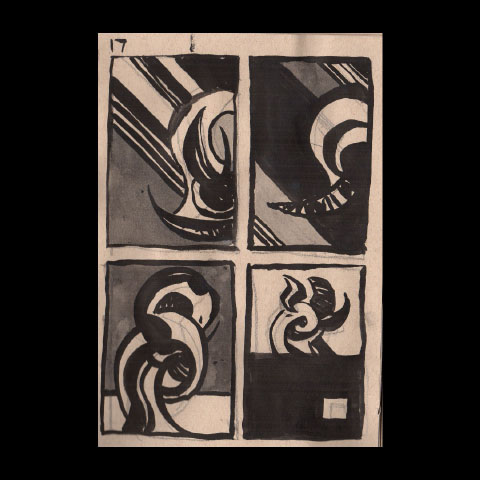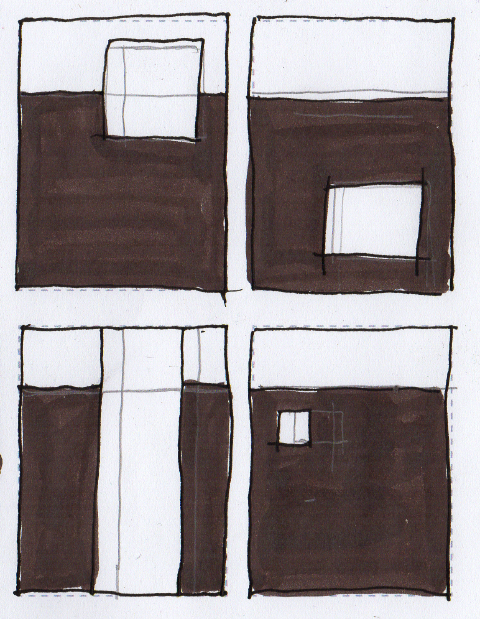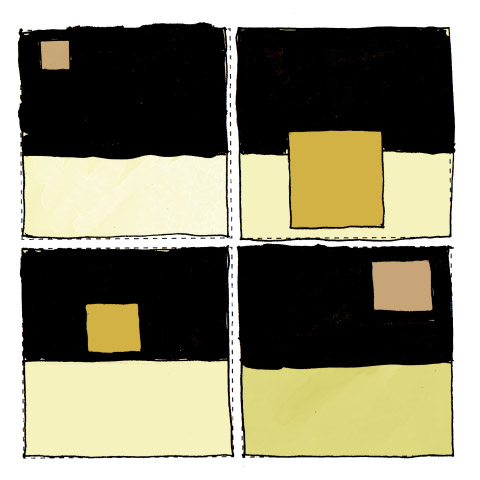Good instruction and good teaching do not provide explanations. They tell you what to do and, to a certain extent, how to do it, and it is through the doing that you discover how the practice works.
Ken Macleod

There are two parts of comics, drawing and storytelling.
But pulling comics apart to understand and develop the work from the foundation is rarely done.
Doing abstract comics takes you closer to the basics of what makes comics a medium and not just illustration.
After doing a month of Abstract Comics for Inktober I found myself wanting to reduce the comics down another step to really understand how panels fit images together.
I recently bought a book on Joseph Albers’ teaching.
Albers is a painter who taught at the Bauhaus and Yale more or less invented the modern educational system for art in the last century.
All first-year color theory and how to learn it by experiencing it is driven by his book The Interaction of Color.
At Parsons School of Design a couple of my first year teachers had studied with him.
These were the ones who cracked my dumb little skull open and poured in a whole new body of knowledge about making pictures.
The made us look at what was actually happening with the lines, shapes and colors put down on the page.
They developed a critical vocabulary for talking about the form of the art and not just what cool things we had drawn.

Alber’s last thirty years of his life was spent painting the Homage to the Square, just color in a series of centered squares.
Color is the most complex part of picture making as it can carry more emotion than almost any other part of a visual.
Each painting is just a set of colors that are carefully mixed and create a different painting each time.
Even if it’s just a set of squares set inside of each other.
These are some of the most magical paintings in the world that suck me in and say look the world is magic held by color.

Exercise: 1 square with background
Goal: Define visual structure in four panels
Steps:
1.Define a consistent background shape
2. Use one rectangle and define a rhythm of AND,AND, BUT, THERFORE
3.Use scale and placement only
Outcome: 10 drawings write an evaluation
